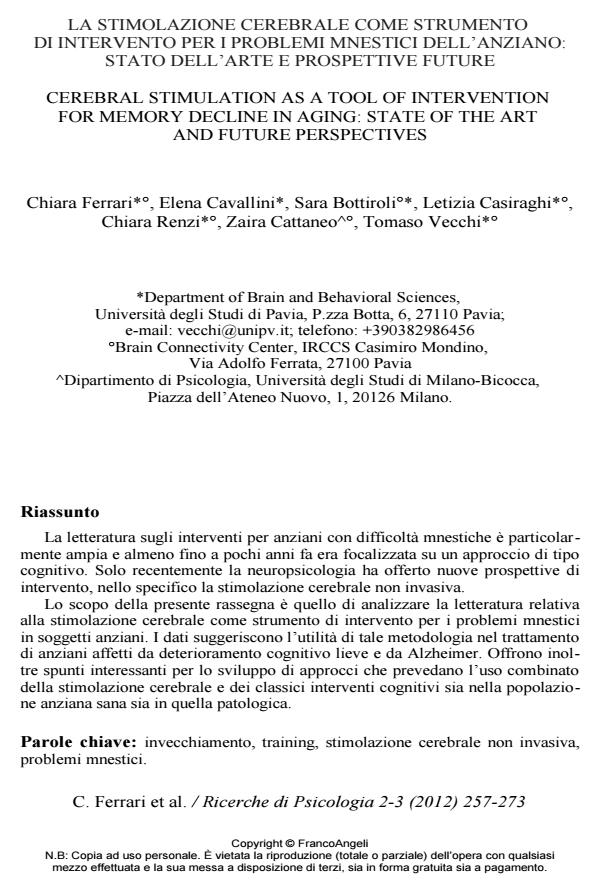Cerebral stimulation as a tool of intervention for memory decline in aging: state of the art and future perspectives
Journal title RICERCHE DI PSICOLOGIA
Author/s Chiara Ferrari, Elena Cavallini, Sara Bottiroli, Letizia Casiraghi, Chiara Renzi, Zaira Cattaneo, Tomaso Vecchi
Publishing Year 2013 Issue 2012/2-3
Language Italian Pages 17 P. 257-273 File size 216 KB
DOI 10.3280/RIP2012-002008
DOI is like a bar code for intellectual property: to have more infomation
click here
Below, you can see the article first page
If you want to buy this article in PDF format, you can do it, following the instructions to buy download credits

FrancoAngeli is member of Publishers International Linking Association, Inc (PILA), a not-for-profit association which run the CrossRef service enabling links to and from online scholarly content.
Several studies investigated the efficacy of interventions on memory deficits in aging, however, since few years ago they had almost exclusively focused on the cognitive approach. Recently, neuropsychology and, in particular, non invasive cerebral stimulation techniques, opened new perspectives of intervention. The aim of this paper is to analyze the literature on the cerebral stimulation as a tool of intervention for memory decline in older adults. Evidences suggest the efficacy of these approaches in treating older adults with Mild Cognitive Impairment and Alzheimer disease. They also offer interesting ideas for the development of new approaches consisting in the combination of classic interventions and cerebral stimulation techniques both in treating normal and pathological aging.
Keywords: Aging, brain stimulation, training, memory impairment
Chiara Ferrari, Elena Cavallini, Sara Bottiroli, Letizia Casiraghi, Chiara Renzi, Zaira Cattaneo, Tomaso Vecchi, La stimolazione cerebrale come strumento di intervento per i problemi mnestici dell’anziano: stato dell’arte e prospettive future in "RICERCHE DI PSICOLOGIA " 2-3/2012, pp 257-273, DOI: 10.3280/RIP2012-002008